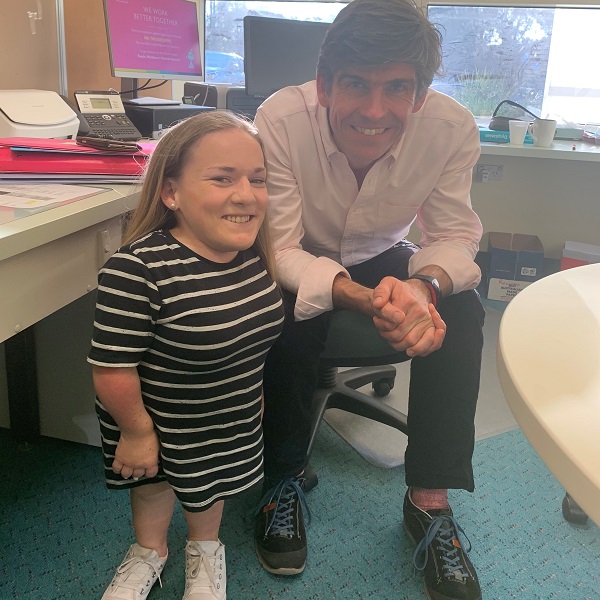Bone-shaking research
Thanks to detailed genetic research, clinical expertise, and the Garvan Institute’s world-leading technology, more causes of skeletal dysplasia are being uncovered.
Dr Andreas Zankl works on two very different fronts as he helps patients with skeletal dysplasias – some of the most challenging conditions in the world. On the one hand, he works with the patients and their parents, examining them, taking x-rays and determining which of more than 450 known conditions they have, then working out treatments and management plans. But at the same time, he works with one of the most advanced genetics technologies in the world, diagnosing the most difficult cases and endeavouring to uncover the genetic causes behind the 10% of skeletal dysplasias for which the cause still isn’t known.
With funding from the Sydney Genomic Collaborative, an initiative established by NSW Health which enables clinicians and researchers across NSW to access leading technologies and develop capability in genomic research and medicine, Dr Zankl has been able to apply whole genome sequencing to 70 families with difficult cases of skeletal dysplasia. Although the work is ongoing, the results have already provided relief to more than a dozen families, as they have received a diagnosis for the first time, giving them a way forward in the management of their child’s condition.
Skeletal dysplasias include bone malformations such as dwarfism, fragile bones and scoliosis. They can result in multiple bones breaking, or bone deformities that restrict organs such as the lungs. They might squeeze nerves, causing paralysis and, in severe cases, will result in the death of the foetus in the womb, or in early childhood.

‘Many other genetic disorders have a level of intellectual impairment, but skeletal dysplasias usually don’t, so it is particularly important to overcome the physical issues to allow them to participate fully in school and other activities,’ he said. ‘We try to treat them even if we don’t have a diagnosis, but if you know the genetic cause you know what to look out for. For example, in one form of dwarfism the retina is prone to detach, leading to blindness, but in other forms of dwarfism, there isn’t a major risk of eye problems. In other forms of skeletal dysplasias there are risks of kidney problems, so we can screen for that. Once you know the genetic cause, it also helps you with things you can’t see from the outside.’
Dr Zankl said there has been a push in the past 10 years to find out the causes of the roughly 450 types of skeletal dysplasia, and now the genetic causes of more than 400 are known. ‘I am particularly interested in cases where the responsible gene isn’t known. Finding a disease gene that no-one has found before – that’s the hardest part of the research, but it’s also where we can learn the most. It’s at the forefront of the world.’
Having previously worked in Switzerland and Brisbane, Dr Zankl said he chose to come and work at The Children’s Hospital at Westmead because it has one of the oldest and largest services for children with skeletal dysplasias in the world. He was also keen to gain access to the world-leading genetic research facilities at the Garvan Institute. The institute was the third institute in the world to get the Illumina HiSeq X Ten, which allows researchers to do whole genome sequencing for less than $2000 per person. Most other research facilities at the time could only do whole exome sequencing, which ignores about 99% of a person’s genetic information.
‘I am very excited to be at the forefront of all this research,’ he said. ‘Not many centres in the world would have such a well-characterised group of rare and undiagnosed skeletal dysplasia patients in which the whole genome has been sequenced. This research and writing up the results will probably keep me busy almost for the rest of my life.’
Updated 4 years ago